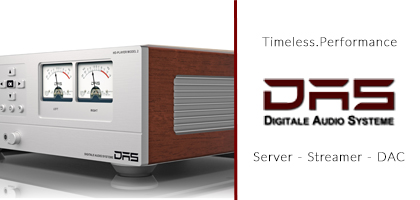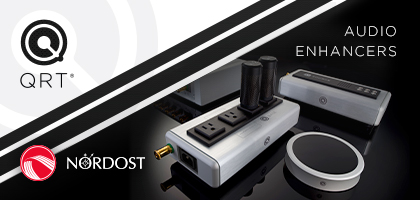No. 239 April 2024
- COVER REVIEW: Muarah MT-3 & MY-1/9 ⸜ turntable & tonearm » POLAND
- KRAKOW SONIC SOCIETY ⸜ meeting № 145: POLSKIE NAGRANIA (Polish Recordings label) on SACD, with Damian Lipiński onboard » POLAND/Kraków
- REVIEW: Carbide Audio CARBIDE BASE ⸜ anti-vibration feet » USA
- REVIEW: Fezz Audio EQUINOX EVO ⸜ digital-to-analog converter » POLAND
- REVIEW: Marton OPUSCULUM OMNI V1.0 ⸜ integrated amplifier » POLAND
- REVIEW: Norma Audio Electronics REVO IPA-80 ⸜ integrated amplifier » ITALY
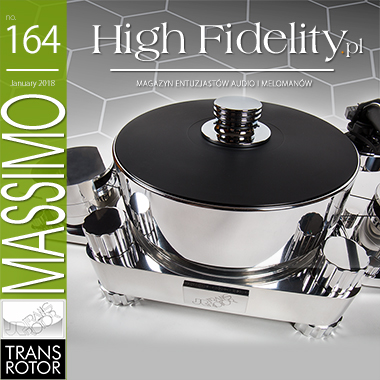

|

|
|
A LANDSCAPE AFTER COMPUTER On the occasion of the 20th anniversary of the release of the Radiohead's OK Computer 
| Pre-OK Computer That's the reality the Radiohead was quietly rising. Although its beginnings date back to the 1980s, the Thom Yorke group had to wait for their phonographic debut until 1992. That's when the first single - Creep landed of the shelves of music shops. Although initially the song was received without much enthusiasm, it eventually achieved great success, becoming an international hit listed equally willingly in Spain or New Zealand, as in the USA. This unexpected success, however, was a one-time event; the released in 1993, Pablo Honey did not turn out to be such a successful undertaking (though, admittedly, it found its supporters). The band, who at all costs wanted to avoid being labeled as one-hit-wonder, was aware of the huge work that had to be done, above all in terms of live concerts. The fans had to be gradually accustomed to the unusual Radiohead sound, rooted in grunge, but looking for his own unique way. Show after show, town after town, song by song. In the mid-1990s, band released the second longplay entitled The Bends, promoted by an exhausting concert tour. Only in the USA in 1995 alone, it included 177 performances. Thom Yorke - the person who, even when he is happy, looks as if he was struggling in a depressing battle with internal demons - spent months in identical buses, planes and hotels. As he admitted, he was in fact in a catatonic state. Years later, he will describe his condition in this way: "Claustrophobia - I had no sense of reality." 
Composing for Yorke was the only form of escape from the devastating scheme of a bus-hotel-concert-hotel-bus routine, stretching indefinitely for several years. He tried to deal with his fears caused by general haste, intensified by the aforementioned concert regime, which by the end of the twentieth century became unbearable for many. From today's perspective it sounds like a (grim) joke, but in the era of only the beginning of the Internet or mobile phones people felt tired of the constant flow of new messages, which more and more often became already obsolete as soon as they were released into the world. Thom Yorke was no exception, he "felt overload with information". The music he created at this time was his way to help him sort out the chaotic reality. The rehearsals related to the successor of The Bends began in mid-1996. Most of the work was done by the band in an idyllic historic setting of the St. Catherine's Court, the residence belonging at the time to the actress, Jane Seymour. Although renting this historic space could not be cheap, the label responsible for Radiohead - EMI - offered the group their financial support. Ultimately, Yorke and the band spent six weeks there. The story of Thom trying to shave himself became legendary. "Once I got up in the morning after hearing the voices in my head at night, and decided that I had to cut my hair." The whole operation, as you might expect, did not end well - the artist hurt himself with scissors and it was the intervention of Phil Selway (Radiohead's drummer) that helped to save the situation. | OK Computer 
Despite the type of "events" the fruit of those sessions still, even 20 years later, still arouses astonishment and genuine admiration. The OK Computer - as it was titled - is a unique album. Not only did it hit the market in the right moment, both in terms of music and lyrics, but it perfectly survived the test of time. Ultimately, it included 12 tracks, and at least three of them became rock classics. The biggest hit was Paranoid Android, which lasted over six minutes and was the first release promoting the upcoming album. Interestingly, initially this track lasted much longer (14 minutes) and was extended with a long organ part, but eventually the band decided to throw away the spectacular performance Jonny Greenwood. Even more interesting was making of another hit from the OK Computer, titled Karma Police. One evening Thom Yorke told Nigel Godrich about his dislike for the second part of this song. The gentlemen decided to take the matter into their own hands and - without the knowledge or participation of other members of Radiohead – to edit it. It was a solid job achieved using various studio tricks (The Beatles and George Martin could be proud), which - according to Andy Greene, a journalist of "Rolling Stone" - outlined the band's future trail, at the end of which was another masterpiece of rock music - the Kid A. OK Computer quickly conquered the national charts, reaching the first place on the UK Albums Chart. What's more, the unusual atmosphere of the third Radiohead studio album was liked also by the American fans; neither before nor after that no album of Yorke and the band debuted so high on the Billboard 200 Chart, taking the 21st place. So far, the album has sold in 4.5 million copies, which makes it even more impressive if you consider that a significant part of his "life" was in the Napster era, era of downloading files via the Internet and of music streaming. | Post-OK Computer 
From that moment on, the lives of Radiohead members have never been the same. From a local curiosity that had just one hit, it turned into an international star that at one point was even perceived as the most important rock band in the world. Over the next 20 years, the British band released six more albums, the most successful of which was the already mentioned Kid A. The last album, signed by the band led by Yorke, was the, released in 2016, A Moon Shaped Pool. Although it turned out to be an artistic and commercial success, as indicated by two Grammy nominations in the Best Alternative Music Album and Best Rock Song categories, as well as decent sales in the United Kingdom or the United States, it was in not nearly as successful as its great predecessor. It has been 20 years since the release of the OK Computer. On this occasion, the band, in cooperation with the independent record label XL Recordings, decided to remind the world about their work, preparing its anniversary re-issue. The group, however, did not stop at releasing the usual remaster but wanted to offer their fans something more. OKNOTOK - that's how they decided to name this release – was offered in several interesting versions. Apart from a CD or a 180g, 3-disc vinyl edition, a collector's box also appeared on store shelves. It included, inn addition to the vinyl version, also a cassette with material from recording sessions of the OK Computer, a 104-page notebook with Yorke's notes and his 48-page sketchbook. |
Although everyone likes all kinds of gadgets, the most important part of the OKNOTOK is a collection of 11 additional tracks. Among them, three - I Promise, Man of War and Lift - have never been released before. Interestingly, there is a Polish accent to the first of these unpublished pieces. Person responsible for the music video for I Promise was Michał Marczak (who had previously worked with Radiohead on video fragment for Identikit), and it includes a short appearance of Agata Buzek. 
Since the release of the OK Computer in 1997, almost everything has changed. From heavy, uncomfortable and clumsy cell phones, we moved to designer's works of applied art, which undoubtedly are modern smartphones. The flood of information available on the web within just one click is even bigger than before, plus more and more often we have to face fake news. Also the music industry is no longer the same as it was two decades ago. At the top, there are bands and artists about whom nobody even heard when Radiohead worked on their masterpiece. The Internet has brought the music to people in an unprecedented way - via Internet radio, YouTube or streaming services - but it also hurt the basics of what all people professionally associated with music have been based for at least half a century. Only Radiohead remained the same: honest, truthful to their convictions, inclined to reflecting on the condition of the world - whether the one from 20 years ago or today's. REVIEW Ultimate HQCD LABEL: XL Recordings Limited/Beat Records XLCDJP868 
The OK Computer. OKNOTOK 1997 2017 album was released in June 2017 by the new for Radiohead label - XL Recordings. The band moved to this label in 2016 from EMI. OKNOTOK brings the remastered material from the original mother tapes on two discs (in the CD edition): the first one includes the original material from OK Computer, the second disc includes eight tracks and some archive recordings (three tracks). Unlike previous EMI re-issues, this time the band chose all the additional materials themselves. The album was dedicated to Rachel Owen, the former wife of Yorke, who died of cancer a month before the album was released. The material appeared in several versions, both digital - on Compact Discs and analog - on cassette and LP. The Japanese record label Beat Records, partner of XL Recordings, released it on the latest version of the HiQuality CD, Ultimate HQCD. Let me remind you that this is not a new format, but a different technique of making a CD. Instead of using a polymer that does not exactly fill the pits of a metal matrix, it features a plastic used to build LCD displays, which solidifies under the influence of light of a certain length. What's more, instead of an aluminum reflecting layer, a silver-based alloy is used. This is to give a much more accurate reading of information from the disc (more HERE). We review the Ultimate HQCD version. 
SOUND The Radiohead albums have been released in Japan for several years, also on new generation CDs, eg on Blu-spec. It was the first time though, that I listened to their album from Ultimate HQCD. This release confirms something that I was sure about: good music, regardless of how it is recorded, gains something special of a higher resolution of such releases, something that is hidden “between" sounds. Because it is not the best recorded material in the world. But at the same time it is a really well recorded (post-) rock material. Even so, knowing the post-grunge genesis of this band, being his fan for years, when buying OKNOTOK I was curious first of all about one recording: Exit Music (for a film). I was not disappointed. It was dense, low-set, fleshy sound with great vocals. And that's what it was about. The truth about the music, emotions, tangibility, but not necessarily about a purist approach to sound. 
Because it is a clearly changed sound, both in relation to the original edition and the European version of the re-issue. It features an emphasized mid-bass and upper midrange. The treble is slightly warmed up and a little withdrawn. This allowed avoiding excessive lightness of the original, which on some systems could turn into dryness. But with the addition of a little booming bass. It's a bit unfair description, because it's a-historic – assessed from the perspective of the new master. And this one is dense and a bit warm. There is a lot of treble, it's not withdrawn, but clearly they tried to make the sound of this disc similar to what we know from The King Of Limbs in the Blu-Spec CD version. This is not entirely possible, because the OK Computer does not feature such a saturated “tissue” between attacks, and the bass is not fully controlled.. 
But it is this kind of sound, that is: saturated and warm, tonally deep. The dynamics is good, but it is rather about the energy of a dense sound. A lot is happening here, layer after layer build a powerful performance. And when you hear mainly the vocals, whether in the already mentioned Exit Music ... or the mechanical one in Fitter Happier, there is everything that we expect from such a presentation - tangibility, strong foreground, density, saturation. This applies to both the basic disc and additional materials. The latter could easily be an independent release, that many bands would be proud of, claiming that it is their opus magnum. The OKNOTOK in the Ultimate HQCD version is the best version of this album I know. It is not perfect, but the material itself has a rather dirty, rock aesthetics. Only starting from, say, Kid A we deal with the advantage of electronics and long, growing phrases that give the flesh to the music by themselves, i.e. through their own character. OK Computer is still a child of indie music, something from outside the system, from the fringe of rock music. The Japanese gave it a little more polite character and fine-tuned it. It suits me, I like it. Sound quality: 8/10 |
About Us |
We cooperate |
Patrons |
|
Our reviewers regularly contribute to “Enjoy the Music.com”, “Positive-Feedback.com”, “HiFiStatement.net” and “Hi-Fi Choice & Home Cinema. Edycja Polska” . "High Fidelity" is a monthly magazine dedicated to high quality sound. It has been published since May 1st, 2004. Up until October 2008, the magazine was called "High Fidelity OnLine", but since November 2008 it has been registered under the new title. "High Fidelity" is an online magazine, i.e. it is only published on the web. For the last few years it has been published both in Polish and in English. Thanks to our English section, the magazine has now a worldwide reach - statistics show that we have readers from almost every country in the world. Once a year, we prepare a printed edition of one of reviews published online. This unique, limited collector's edition is given to the visitors of the Audio Show in Warsaw, Poland, held in November of each year. For years, "High Fidelity" has been cooperating with other audio magazines, including “Enjoy the Music.com” and “Positive-Feedback.com” in the U.S. and “HiFiStatement.net” in Germany. Our reviews have also been published by “6moons.com”. You can contact any of our contributors by clicking his email address on our CONTACT page. |




 |
     |
main page | archive | contact | kts
© 2009 HighFidelity, design by PikselStudio,
projektowanie stron www: Indecity



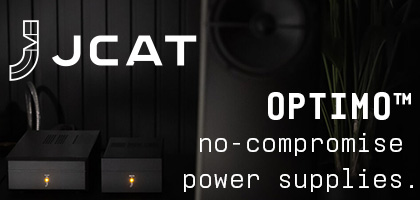
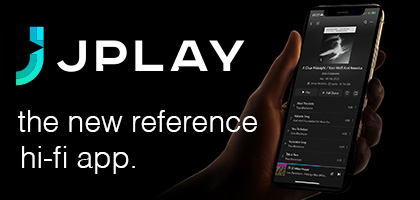
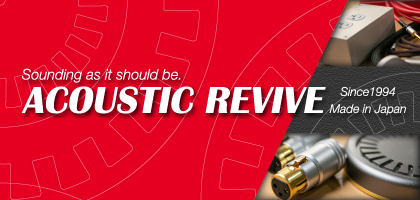

 n the second half of the 1990s, the rock was dying. From the suicidal death of Kurt Cobain in 1994, its most vital variety, grunge, was in a constant defensive. Music lacked this youthful energy and, above all, honesty, which determined the success of Nirvana or Soundgarden. Even worse were the achievements of the old rock heroes who a few years earlier had ignited the imaginations of millions of people around the world. Iron Maiden was in a terrible condition because of friction between members, there was not even a trace after the wave of glam metal bands, even the biggest stars such as Kiss or The Rolling Stones (I doubt anyone would remember their Bridges to Babylon album from 1997, if not for the hit called Anybody Seen My Baby?) had to settle for less attention from the fans. Apart from a few exceptions (among older bands - Metallica, among the newer ones - Oasis or Blur), no band nor artist could calm the hearts of rock-fans, eagerly awaiting more hit albums and hit singles. The genre was barely alive.
n the second half of the 1990s, the rock was dying. From the suicidal death of Kurt Cobain in 1994, its most vital variety, grunge, was in a constant defensive. Music lacked this youthful energy and, above all, honesty, which determined the success of Nirvana or Soundgarden. Even worse were the achievements of the old rock heroes who a few years earlier had ignited the imaginations of millions of people around the world. Iron Maiden was in a terrible condition because of friction between members, there was not even a trace after the wave of glam metal bands, even the biggest stars such as Kiss or The Rolling Stones (I doubt anyone would remember their Bridges to Babylon album from 1997, if not for the hit called Anybody Seen My Baby?) had to settle for less attention from the fans. Apart from a few exceptions (among older bands - Metallica, among the newer ones - Oasis or Blur), no band nor artist could calm the hearts of rock-fans, eagerly awaiting more hit albums and hit singles. The genre was barely alive.
